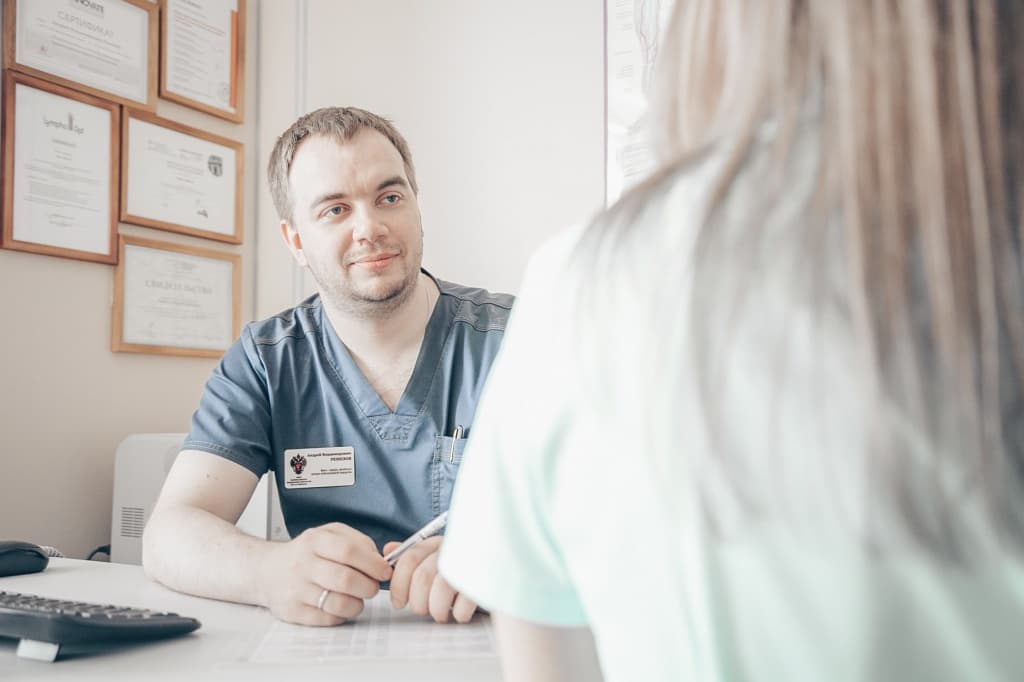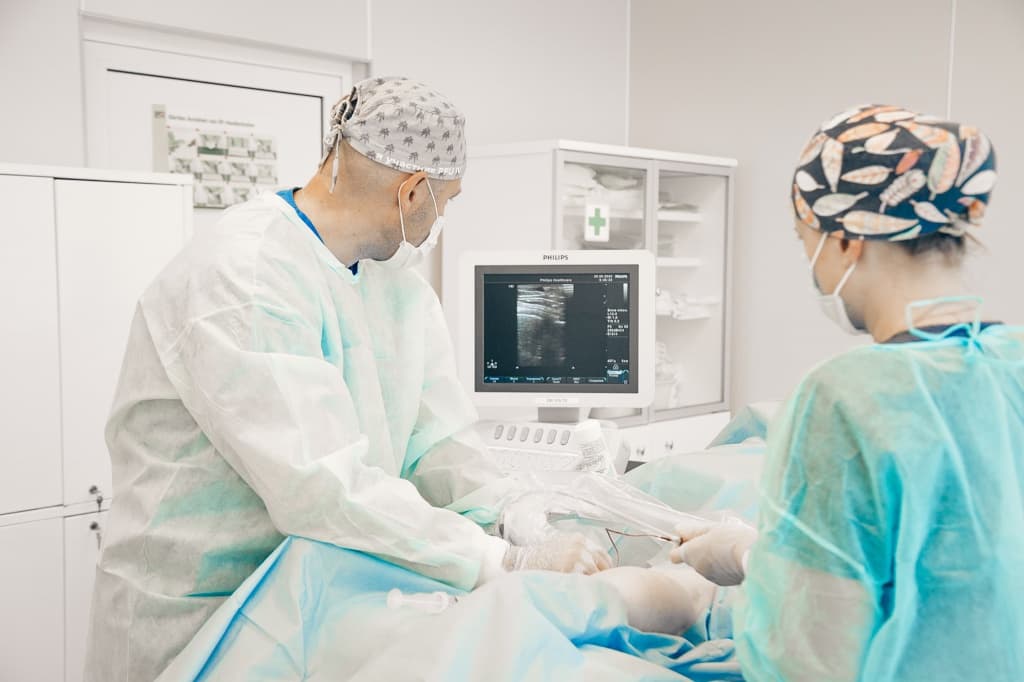Outpatient healthcare services focused on conservative and surgical treatment of patients with vein diseases are carried out in the Centre for Outpatient Surgery.
Effective teamwork between healthcare professionals working in conjunction: outpatient clinic ( hospital ( outpatient clinic, enables monitoring the patient for the entire period of treatment. Experts in phlebology at the Pirogov Clinic of High Medical Technologies at St Petersburg University use all modern methods in the treatment of varicose disease.
Nowadays, lower extremity venous disease is the most common vascular disorder. Varicose veins are most commonly detected in women aged 25 to 45 years and men aged 45 and older.

Main causes of varicose veins:
- genetic history of family members with varicose veins;
- sitting or standing for long periods; carrying weights; excessive physical stress during sports;
- hormonal shifts;
- excess body weight;
- pregnancy;
- wearing high-heeled shoes for long periods of time.
Conservative treatment of varicose veins

1. Conservative treatment options include:
Medical therapy aiming at:- increasing the tone of the venous wall and venous valves;
- improving lymph drainage;
- improving microcirculation;
- normalising the rheological properties of blood;
- eliminating inflammation.
- A treatment plan includes several courses of therapy;
- A combination drug therapy for better efficacy outcomes;
- A polytherapy – a combined pharmacological treatment with other types of treatment modalities (compression therapy, surgical treatment, etc.).
2. Compression therapy
All vein diseases treatment options necessarily involve the use of elastic compression. The compression hosiery works by exerting the greatest degree of compression at the ankle, with the level of compression gradually decreasing up the garment, while controlled pressure is applied on the vein wall. Compression stockings, socks and tights provide the necessary lower leg support and improve circulation, protecting vein walls from overstretching. After a consultation with our specialists, your diagnosis will be specified and you will be offered the optimal treatment plan and a qualified advice on the best ways to clear the venous insufficiency signs and symptoms.3. Surgical treatment of varicose veins
The goal of all methods of varicose vein surgery is to remove the pathological veno-venous reflux.
-
Endovenous Laser Ablation (EVLA): Endovenous laser varicose vein surgery is a procedure that uses heat from a laser to cauterise (burn) and close varicose veins. With ultrasound guidance, a laser fibre is placed into the saphenous vein through a tiny incision. The light energy is absorbed by the blood and the vein wall and is converted into thermal energy, leading to protein denaturation in the vein wall and subsequent luminal contraction. The fibre is slowly pulled back through the vessel, closing the lumen of the modified vein. Indications for endovenous laser ablation are: ostial dilation of the great saphenous vein (GSV) of less than 15 mm; a small number of varicose tributaries; the trunks of the great and small saphenous veins are patent, and the presence of trophic ulcers of the lower leg.
- Endovascular sclerotherapy of incompetent perforator veins: In an X-ray operating room, a contrast agent is injected in the deep femoral vein to obtain medical images of the affected limb venous system (retrograde phlebography) and find incompetent perforator veins. Perforator veins are communicating veins that connect superficial and deep veins. Then, a transcatheter-guided sclerotherapy is performed to obliterate incompetent venous perforators. Endovascular sclerotherapy is a minimally invasive ablation method that uses chemical agents to treat venous perforators and their tributaries. It offers several advantages, including the reduced surgical trauma. Angiography-guided sclerotherapy helps to reduce damage to the deep veins of the lower limbs.
- Mini-Phlebectomy is a technique in which varicose veins (tributaries) are removed using one to two millimetre incisions. Varicose veins are removed with small hooks through cosmetic skin punctures. Indications for this treatment are segmental (limited) varicose veins that are not associated with the main veins. Also, this procedure is often performed in combination with endovenous ablation of the great or small saphenous veins.
- Ligation of incompetent perforators. A technique called ligation involves tying off the vein and then removing it. During ultrasound-guided procedure, pre-marked incompetent perforator veins are removed with a mini-phlebectomy hook through individual incisions. Indications are similar to those applicable for mini-phlebectomy.
- Phlebectomy can be performed under local, epidural or general anaesthesia. The trunk of the great saphenous vein (GSV) is removed through incisions in the inner ankle and in the groin after ligation of the GSV tributaries at its termination into the femoral vein (crossectomy). Varicose veins (tributaries) are removed with small hooks through cosmetic skin punctures (mini-phlebectomy).
- Sclerotherapy is the targeted chemical ablation of a varicose vein by intravenous injection of a liquid or foam sclerosing agent. The procedure in commonly used to remove: spider veins; reticular veins (extended networks of venous vessels); or larger varicose veins. Sclerotherapy is often used to address the cosmetic problems of dilated blood vessels.
